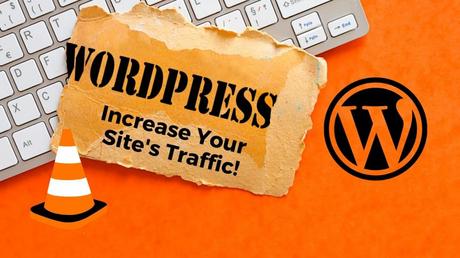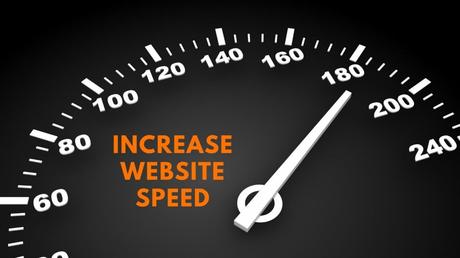
There are numerous aspects to consider when it comes to the growth of your website’s audience. Among the most important is your site’s search engine optimization (SEO) performance. Your site’s ranking position in search engine results pages (SERPs) is one of the primary factors determining how much traffic it receives. The higher your WordPress site traffic ranks, the more likely users will click on it.
 How to check traffic on WordPress site and make changes to your website to increase its traffic.
How to check traffic on WordPress site and make changes to your website to increase its traffic.
In this article, we will go over several key strategies that can help boost the number of your WordPress site visitors.
How SEO Impacts WordPress Site Traffic
Some of the most popular search engines like Google, Yahoo!, and Bing crawl and index content to provide users with the most relevant search results.
Implementing good WordPress SEO tips like optimizing your meta description, using a responsive website design, and writing original content can all contribute to making your site more discoverable. This enables you to reach a broader target audience and improve conversion rates.
Luckily, many WordPress SEO plugins are available to help optimize your site so that it performs better on search engines. For example, the Yoast SEO plugin comes in handy to maximize your efforts by providing on-page SEO suggestions for your content.
How to Increase WordPress Site Traffic
Now that you understand the importance of your WordPress website’s SEO performance, follow these tips to ensure you can drive more website traffic.
1. Speed Up WordPress Website
The time it takes for your site to load is a significant factor in its overall SEO success. If your site is slow, visitors will likely click off immediately, leading to high bounce rates. This can negatively affect your search engine rankings as Google considers page speed one of its key ranking factors.
Here are a few best practices to help ensure WordPress sites load fast:
- Use a content delivery network (CDN). A CDN improves your site’s loading speed by delivering content from the closest server to the user’s location.
- Reduce HTTP requests. Users’ web browsers send HTTP requests to your web server each time they want to load page content. This means the larger a web page is, the more requests are sent. To quicken loading time, minify your CSS and JavaScript files using plugins like Autoptimize or Fast Velocity Minify.
- Optimize your images. As large-sized images can slow down your site, use plugins like Smush or ShortPixel to compress image sizes without compromising quality.
- Choose a suitable hosting plan. Your site will likely deal with slow performance if it’s sharing server resources with other websites. We recommend opting for a virtual private server (VPS) or cloud hosting plan that lets you manage your site with allocated resources.
 Learn how you can increase the speed of your WordPress site.
Learn how you can increase the speed of your WordPress site.
For a more comprehensive guide on site speed optimization practices, we recommend checking out Hostinger’s tutorial for improving your WordPress site speed. It outlines 12 actionable steps, from choosing a responsive theme to utilizing caching plugins.
2. Optimize Content and Images
Creating SEO-friendly and high-quality content will help your site drive more organic traffic. Use Google’s Keyword Planner or Google Trends to identify the right focus keywords to include in your articles, page titles, and meta descriptions. Remember to avoid keyword stuffing to provide an excellent user experience and boost your ranking on search engines.
Optimizing your images can also help improve SEO. Ensure to provide descriptive, well-structured, and keyword-rich image file names so search engines can index your website more easily. Also, make sure that all site images have appropriate alt texts.
3. Use SSL
A secure sockets layer (SSL) certificate encrypts all the transferred information between your WordPress website and users’ browsers. This secure connection helps prevent hackers from easily intercepting sensitive information like login credentials and credit card details.
Any website with an SSL certificate will display a padlock icon next to the URL address and use HTTPS instead of the HTTP protocol. It is an important ranking factor, as these two visible indicators demonstrate your site’s credibility. Ensure your chosen hosting provider includes a free SSL certificate in their plans.
 Be sure to use an SSL for your WordPress site traffic to grow.
Be sure to use an SSL for your WordPress site traffic to grow.
4. Add Internal and External Links
Link-building practices are another way to help increase your site traffic. When users click on internal links in your content, it will lead them to another page within your site. These links help Google and other search engines better understand your website structure. A good internal linking strategy is including keywords in anchor texts.
Meanwhile, external links lead users to other websites. A good practice is to always link to reputable sources. This indicates that your content can be valuable to readers and worth indexing to search engines.
It is important to keep both external and internal links relevant to the content. Another tip is to always ensure there are no broken links. Additionally, use the XML Sitemaps plugin to improve your site’s visibility to search engine crawlers. An XML sitemap contains comprehensive information regarding all of your web pages.
5. Use Proper Permalinks
Permalinks are permanent URL addresses for web pages, usually containing target keywords. Create a clear and descriptive permalink for each blog post or page to help your site rank higher on search engines and bring in more visitors.
Set your permalink structure by going to Settings on your WordPress dashboard and choosing Permalinks. Select a permalink template from the six available structures, then click Save Changes to apply the settings to all your upcoming posts and pages.
 Set up your permalink settings for your WordPress site traffic to flow well.
Set up your permalink settings for your WordPress site traffic to flow well.
6. Add Site to Google Search Console
Creating a free Google Search Console account will give you insights into how Google crawls and indexes your site, what keywords drive traffic to it, and how to improve your overall position on search results.
To get started, you will need to verify site ownership. Then, begin tracking your website and access numerous metrics and data, such as keyword performance reports, mobile usability, and page speed.
7. Increase Reach Through Social Media
With the right strategies, you can make your social media presence stand out, boost brand recognition, and drive website traffic. Create compelling content and promote them on multiple platforms like Facebook, Twitter, and Instagram. Use hashtags related to your brand to get more people’s attention.
Then, make it easy for users to share your web content in just a few clicks. Include social sharing buttons on all your website pages using plugins like Smash Balloon or Simple Social Icons.
Moreover, interact with your audience by responding to your followers’ comments and messages. This will help build stronger relationships between you and site visitors.
 Engage with users of your WordPress site through social media and marketing.
Engage with users of your WordPress site through social media and marketing.
8. Monitor WordPress Site Traffic Performance
After applying all the best practices to boost website traffic, track your site’s performance using tools like Google Analytics.
Understanding what works and doesn’t will help you identify and fix any issues impacting your WordPress site’s traffic. Remember to also implement the right marketing efforts to drive more traffic and sales.
Let’s look at some of the key metrics to track:
- Page load time. Refers to how long it takes for a page on your site to load fully. Slow websites tend to drive away visitors.
- Uptime. Reveals the percentage of time that your site is accessible. Users will likely question your site’s credibility if it frequently suffers from downtime.
- Error rates. A high error rate indicates problems with your site’s code or content and can lead to a negative user experience, thus reducing website traffic.
Conclusion of WordPress Site Traffic for Better SEO
By implementing the eight best practices for optimizing your WordPress website’s SEO performance, you will likely start seeing a traffic increase. Here’s a quick recap of the tips we’ve discussed in this article:
- Speed up your WordPress site.
- Optimize content and images.
- Use SSL.
- Add internal and external links.
- Clean up permalinks.
- Add your site to Google Search Console.
- Increase reach through social media.
- Monitor the site’s performance.
Do you have any tips on how to drive more visitors to a website? Feel free to share with us in the comments!
FAQ’s
What is SERP?The practice of optimizing websites and web pages for discovery in search engines to rank well on the Search Engine Results Page.
What is SEO for WordPress?You can optimize your WordPress site with SEO plugins and other plugins like an image reducer plugin and a cache plugin.
How can you speed up a WordPress site to increase traffic?Use a content delivery network, minify your files, optimize images and choose the right hosting plan.
How can you optimize content?Find the right keywords and don’t overdo them. Use a plugin like Yoast if you are a beginner.
How to optimize images for your WordPress site to drive traffic?Use high-quality images, optimize them and use alternative text for SEO benefit.
How does SSL help your WordPress site drive traffic?It is one of Google’s ranking factors and visitors will find it safer to purchase from you.
What type of links should you add?Both internal and external links link to relevant and quality content.
What are proper permalinks?Use clear and descriptive URLs for your website pages and blog posts.
How does Search Console help your WordPress site?You can gather a wealth of info about your website from it and improve your site.
Can social media drive traffic to your WordPress site?Social media can if you engage with your audience there.
Does Google Analytics help your website?It can give you more information like Search Console so you can make improvements and drive more traffic to your WordPress site.

